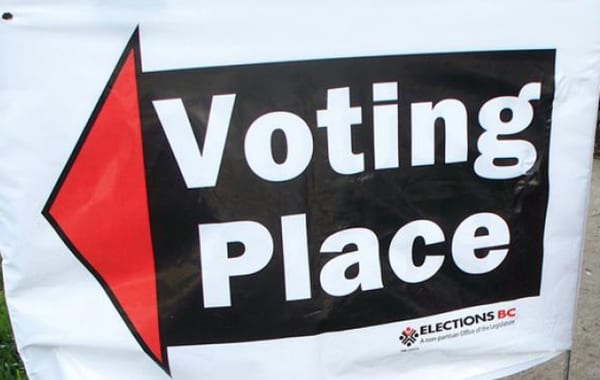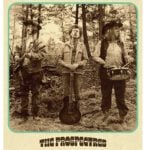Home »

Keeping it simple – Electoral Reform Referendum choices
Part five in a series on BC Electoral Reform
By Carol Gordon
This article is part of a series on British Columbia’s upcoming 2018 Referendum on Electoral Reform designed to help voters to differentiate between fact and opinion and provide internet links to learn more:
Part I- Putting a Face on Electoral Reform;
Part II – A Closer Look at First-Past-The-Post
Part III – First-Past-the-Post or Proportional Representation?
Voting in B.C.’s Electoral Reform Referendum
The 2018 Referendum on Electoral Reform Ballot
“The choice of Electoral System is one of the most important institutional decisions for any democracy. The choice of a particular electoral system has a profound effect on the future political life of the country concerned, and electoral systems, once chosen, often remain fairly constant as political interests solidify around and respond to the incentives presented by them.” Ace – The Electoral Knowledge Network
You should receive your voting package by November 2. If you have not or would like further information refer to Voting in B.C.’s Electoral Reform Referendum.
You can answer both questions on the Referendum ballot or just one. Your ballot will still be counted if you only answer one question. If you support First-Past-The-Post on Question #1, you can still answer Question #2, and you can rank one, two or all three systems. Voter’s Guide 2018 Referendum on Electoral Reform page 3.
Here is some very basic information with internet links on each of the questions and options on the ballot to help you prepare to vote in B.C.’s 2018 Electoral Reform Referendum.
QUESTION 1 – Which system should British Columbia use for provincial elections? (Vote for one)
Background: An electoral system is a set of rules that determine how elections and referendums are conducted and how their results are determined. See voting system basics.
The current First-Past-the-Post voting system?
Background: First-Past-The-Post (FPTP) is a plurality voting method. It was developed in Great Britain in the 1600s, at a time when there were two political parties, but was only applied in 1884-1885. The candidate with the most votes in the district/riding wins and is their representative in the Legislature. It is one form of “the winner takes all” family of electoral systems. The more candidates contesting a constituency seat the greater the possibility that the winning candidate will receive only a minority of the popular votes cast. It is also possible in a two-party system that a political party with a minority share of the popular vote could win a majority of the seats.
Below is a simplified example of First-Past-The-Post system showing how a minority of votes can be converted into a majority of seats. Party A with 53.3% of the popular vote receives one-third of the seats while Party B with 46.6% of the vote gains two—thirds of the seats.
A Proportional Representation voting system?
Background: Proportional representation can be traced back to the late 1800s. “It refers to a broad family of electoral systems designed to share representation out across different strands of opinion.” (The Origins and Impact of Proportional Representation)
“The proportion of legislative seats awarded to a party is roughly the same as the proportion of votes cast for the party or its candidates.” (Majority rule, minority rights, majority tyranny)
QUESTION 2 – – If British Columbia adopts a proportional representation voting system which of the following voting systems do you prefer? (Rank in order of preference. You may choose to support one two or all three of the systems.)
Very large rural electoral districts will stay the same size and will continue to be represented by one Member of the Legislative Assembly (MLA). The candidate with the most votes wins (First-Past-The-Post electoral system). However, most electoral districts will merge with a neighbouring district as shown in the bottom half of this graph.
These dual member districts will be represented by two MLAs. Political parties nominate one or two candidates per district and specify who the primary and secondary candidates are on the ballot. Voters mark their ballot for their preferred party’s candidate(s) or an independent candidate.
Using the same First-Past-The-Post voting approach, the first MLA in the district is awarded to either the winning political party’s primary candidate or an independent candidate who won the most votes. To ensure proportionality, the second MLA in these electoral districts is determined by the percentage of share of the popular votes a party receives province-wide and the party’s performance in each district. Here is an example of a possible ballot for dual member districts:
If Dual Member Proportional is adopted a non-partisan Electoral Boundaries Commission will be established to make proposals for which districts would remain single-member and which districts are merged. (How We Vote 2018 Electoral Reform Referendum Report page 63 – 64).
MIXED MEMBER PROPORTIONAL (MMP)
Under Mixed Member Proportional (MMP) model, voters elect an MLA to represent their local electoral district as they do now, using First-Past-The-Post. At least 60% of the MLAs in the Legislature will be elected in this way.
To ensure the proportionality of the system, as a whole, existing district boundaries will be redrawn to free up 40% of the seats to be used as regional seats. To be eligible, for a regional seat, political parties receive at least five percent of the popular vote province-wide.
With Mixed Member Proportional, voters have two votes: one for the local candidate of their choice, and one for the regional candidate or party of their choice. The details of how the ballot is designed will be determined by an all-party committee if Mixed Member Proportional (MMP) is chosen. Below is an example of a ballot:
RURAL-URBAN PROPORTIONAL (RUP)
This system was designed to address British Columbia’s diverse geography, responding to the different geographic and demographic needs of voters in different parts of the province. The Rural-Urban Proportional (RUP) model combines two proportional voting systems.
Urban and Semi-urban areas of BC
Voters in urban and semi-urban areas would use the Single Transferable Vote (STV) proportional model to elect multiple MLAs in multi-member districts. This option builds on the recommendation of the 2004 BC Citizens Assembly, which was put to a referendum in 2005 and fell two per cent short of the 60% required to pass. For historical background on the use of the nearly 100 year-old Single Transferable Vote (STV) click here.
Political parties can run multiple candidates in a district, but no more than the number of MLAs being elected in that district. Voters can rank as many candidates as they like in order of preference (1, 2, 3, etc.). Here is an example of a ballot:
Rural areas of BC
In less densely populated, geographically large rural districts in B.C, voters will elect district and regional MLAs using the Mixed Member Proportional (MMP) model (described above).
If the Rural-Urban Proportional model is adopted, a non-partisan, Electoral Boundaries Commission will determine the Mixed Member Proportional (MMP) districts, Mixed Member Proportional (MMP) regions, and the Single Transferable Vote (STV) districts.
BACKGROUND INFORMATION ON B.C.’S 2018 ELECTORAL REFORM REFERENDUM
“Making every vote count” was an election promise in the 2017 BC NDP Platform Working for you (page 99) which said: “Our voting system hasn’t been working. It gives all of the power to make decisions to a party that doesn’t even get 50 per cent of the votes. We’ll hold a referendum on changing our voting system to a proportional system, so that every vote counts.”
The B.C. Green Party 2017 Election Platform promised that: “A B.C. Green government will introduce a proportional voting system in time for the 2021 provincial general election. Many analysts say that the “first past the post system” reinforces feelings of disempowerment amongst citizens, because it is possible for a party that receives 40% of the vote for form government, and a party that receives 30% of the vote to get few or no seats. This feeling of disconnection leads to lower voter turnout, and a lack of trust in politicians and the system. Democratic reform will enhance representation, and encourage collaboration between political parties. Consultation will take place on the exact form of proportional representation to be adopted.”
Less than three months after John Horgan and his cabinet were sworn in as an NDP-Green coalition government, they “introduced Bill 6, the Electoral Reform Referendum 2018 Act, to require a provincial referendum be held no later than November 30, 2018 on whether B.C. should keep its current voting system (First Past the Post or FPTP) or move to a system of proportional representation (PR).” How We Vote 2018 Electoral Reform Referendum Report:
- The BC Attorney General launched the How We Vote public engagement November 23, 2017. The purpose of the engagement was:
- To begin informing and educating British Columbians about voting systems and the coming referendum;
- To provide British Columbians the opportunity to help shape key elements of the referendum, including the ballot question;
- To provide British Columbians the opportunity to express their values and preferences respecting voting and representation in the Legislature.
The results of Hon. David Eby, Q.C., BC Attorney General’s six month public engagement process is summarized in his May 30, 2018 How We Vote 2018 Electoral Reform Referendum Report.
“The active public engagement concluded on February 28, 2018, with 91,725 questionnaires completed via the website; 1,101 questionnaires administered to a demographically balanced panel of British Columbians; 46 written submissions from organizations or individuals associated with an institution; 208 submissions by individuals plus hundreds of organizational submission endorsements, 132 Indigenous consultation responses and feedback from face-to-face meetings with community and leadership groups.” How We Vote Written Submissions
“Four key principles have been applied in evaluating voting system suitability for inclusion on the referendum ballot:
- Proportionality: Must provide for generally proportional results, but not at the expense of other key principles and values identified in the public engagement;
- Local representation: Must respect British Columbians’ desire for local representation in all areas of the province and balance the particular needs of urban and rural areas;
- Simplicity: Must not be too complex to be effectively communicated to voters or for voters to use if adopted;
- Size of Legislative Assembly: Must not require a significant increase in MLAs
A voting system need not be in use elsewhere if it is otherwise suitable for B.C. Also, any chosen PR voting system will necessarily reflect a made-in-BC approach, as any new system must be customized to meet our needs.” Report
The feedback received from this public engagement assisted the Attorney General in making recommendations about key aspects of the referendum, including the kinds of voting systems that correspond with voters’ values as well as more specific questions respecting the conduct of the referendum such as rules respecting advertising by interested parties and the provision of public information. After reviewing public input and applying the key principles (listed above), three proportional representation voting systems were recommended for inclusion on the referendum ballot in addition to First-Past-The-Post. How We Vote 2018 Electoral Reform Referendum Report
e-KNOW


















